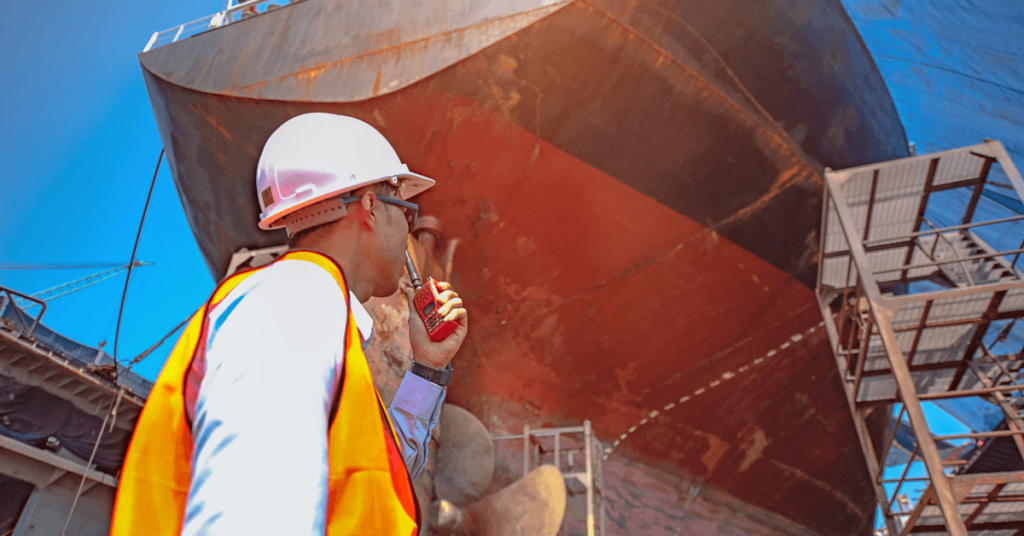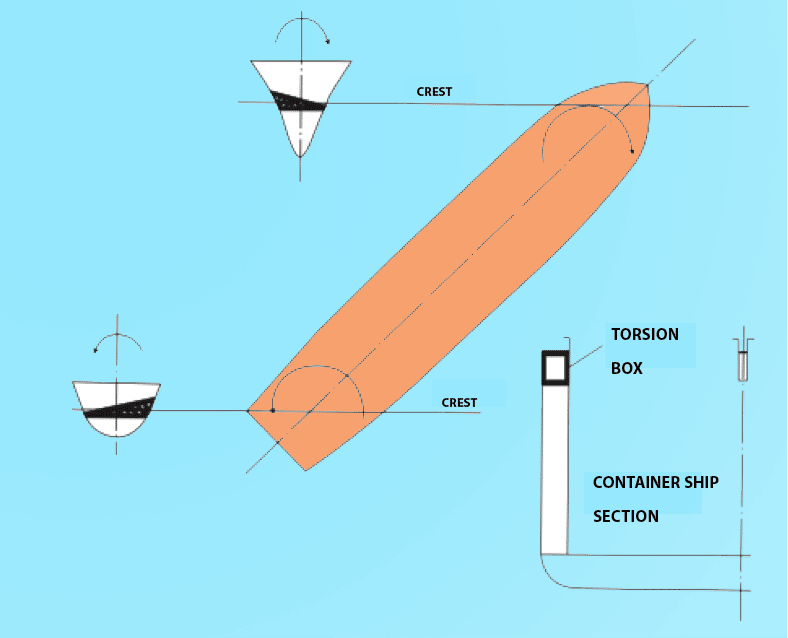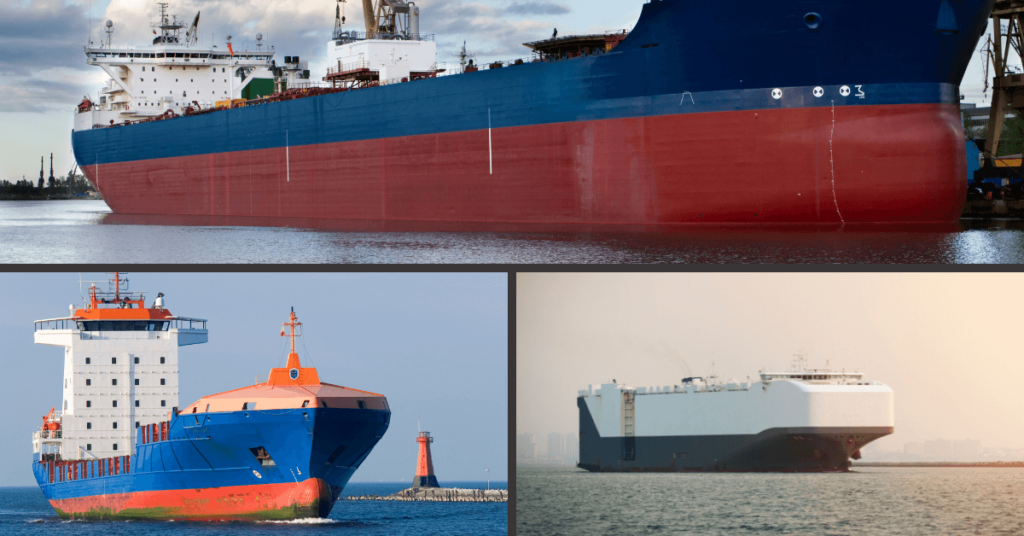Understanding Stability of Cruise Ships

How Do Cruise Ships Float?
The art of designing vessels to fulfil the design and statutory compliance requirements, stay optimally functional in challenging marine conditions while also being comfortable for the crew, and deliver operational efficiency is a feat of engineering and design in itself when it comes to modern-day cruise ships.
The topic of how cruise ships float has often attracted the attention of curious individuals and budding engineering and design professionals alike.
Picture a cruise ship as a giant floating see-saw for a relatable analogy. It’s designed to stay balanced, so it doesn’t tip over.
Engineers ensure the ship’s weight is evenly distributed and low in the hull. This keeps it steady even when the sea gets rough. The details of how these are practically applied will be looked into in this article.
Why Do Cruise Ships Not Tip Over?
The stability of a cruise ship results from the equilibrium between its weight and the buoyant force acting on it. Cruise ships maintain this equilibrium even in rough seas due to their wide hulls (extended beam) and carefully distributed weight.
In cases where extreme stability is required, naval architects use computer simulations and scaled-down models to ensure the ship can withstand various sea conditions before being run on trials at sea conditions.

From a naval architecture perspective, stability is critical throughout the design and construction phases. Stability is primarily achieved through careful hull design, ensuring the ship’s centre of gravity (G) is as low as possible.
In contrast, the centre of buoyancy (B) remains above G. This arrangement creates a metacentric height, as may be referenced from the image below (GM), which determines the ship’s stability. A positive GM indicates stability, and cruise ships, especially, are designed to have a substantial positive GM owing to the design complexities introduced in them.
Moving on, a few questions and crucial elements speak about cruise ship stability holistically.

Why Do Large Ships Float?
The most familiar picture of a ship has always been the RMS Titanic and the tragic tale surrounding its sinking in 1912. It was the largest vessel built by mankind then, and contemporary ship design and production have progressed and evolved considerably in the past 100 years.
Today, when specifically considering cruise ships, the largest vessel at sea happens to be the Royal Caribbean International’s “The Icon of the Seas”. Speaking of scale and principal particulars, it grosses a tonnage of around 240,000 metric tonnes at 365 meters long, accommodating a mammoth passenger and crew strength of roughly 8,000 people. For reference, the RMS Titanic was about 1/5th of this tonnage and measured around 270 meters in length.
To understand something very foundational to the topic of how cruise ships have gained the capacity to accommodate larger and larger capacity requirements, one needs to understand a major scientific principle that dominates the application in multiple fields of engineering and science, especially fluid mechanics.
The principle of buoyancy, as described by Archimedes, is fundamental to understanding why large ships float. A ship’s hull displaces an amount of water equal to its weight. This displacement generates an upward buoyant force that supports the ship’s weight, keeping it afloat.

Now, focusing on the ship’s hull, as it is commonly questioned how a ball of iron would sink while huge steel ships like these continue to sail and float safely, we come to a key element in hull design—buoyant force optimisation.
The design of a cruise ship’s hull is a precise science. Naval architects consider factors such as hull shape, volume, and weight distribution to optimise buoyancy. The intricate fairing methods and optimisation of the displaced volume ensure optimal volume, form, and function; a factor of safety against rough sea states, hull breach and variational loading conditions play a crucial factor in the iterative method of finalising a hull form for the vessel.
Furthermore, they must ensure the ship’s centre of gravity remains within safe limits to prevent excessive rolling and improve stability. The topic of stability will be discussed next.
Ballast Tanks
Naval architects precisely design ballast tanks within the ship’s framework. By managing the intake and outflow of water into these tanks when sailing, the ship’s stability can be fine-tuned. When a ship faces strong seas or uneven cargo, ballast tanks on one side may be filled to balance the ship and restore stability. This is often managed dynamically by the crew onboard the ship systems.

Aside from stability, something needs attention to be considered in relation to complex forces and loading conditions. We shall discuss how ships manage such conditions using advanced counter-measures based on the same foundational principles governing their floating and stability.
Cruise Ship Rolling and Stabilizers
The rolling of a cruise ship is an important part of seakeeping that directly impacts passenger comfort and safety. The unpredictable nature of ocean travel frequently presents the difficulty of ship rolling, which can cause seasickness and discomfort among passengers and create unsafe stability conditions for the ship at sea.
Cruise ships can still experience rolling due to external forces like waves and wind. To mitigate this, they are equipped with stabilisers, essentially retractable fins or gyroscopes. These devices help counteract the rolling motion by exerting forces in the opposite direction, providing passengers with a smoother and more comfortable ride.
A great deal of focus revolves around the primary systems that deal with these aspects of seakeeping; great stabiliser design ensures that guests can enjoy their cruise experience even in rough sea conditions. Modern advancements in stabiliser systems and dynamic positioning have brought on a new era of safety and control with the benefits of human error reduction and better estimation of the unpredictability of sea loading.
Dynamic positioning systems steer the vessels’ primary and secondary stabilisation mechanisms, often with a fairly intuitive and robust numerical model of the ship and loading conditions on redundant computer systems, which navigates the vessel in tough sea conditions.
A completed vessel goes for extensive sea trials, and these ships especially require thorough examination before being declared fit for sea. A team of 450 specialists worked on these tests for The Icon of the Seas to ensure it meets all the functional requirements while being safe and complying with the norms set for design load lines, classification, and IMO protocols.
Unfortunately, these optimally designed ships do have shortcomings as well. They are often criticised for the environmental impact they create (an average large cruise ship consumes 250 tonnes of fuel each day, emitting various pollutants and greenhouse gases), and some people complain about the overutilisation of space and lack of freedom onboard, although these experiences vary.
In conclusion, the design of large cruise vessels, keeping in mind the required seakeeping performance with optimal manoeuvrability, is a multi-variate problem requiring interdisciplinary sciences such as hydrodynamics, hydrostatics, material science, technological integration, navigation, and positioning technology to come together to produce functional vessels which drive the business of their owners and operators.
You might also like to read-
- Ship Stability – What Makes a Ship Unstable?
- 10 Ways to Achieve Energy Efficiency in Ship’s Electrical System
- Various Methods Used to Minimise Resistance on Ship’s Hull
- Ocean Liners VS Cruise Ships- Everything You Wanted To Know
- What are Polar Cruise Ships?
Disclaimer :
The information contained in this website is for general information purposes only. While we endeavour to keep the information up to date and correct, we make no representations or warranties of any kind, express or implied, about the completeness, accuracy, reliability, suitability or availability with respect to the website or the information, products, services, or related graphics contained on the website for any purpose. Any reliance you place on such information is therefore strictly at your own risk.
In no event will we be liable for any loss or damage including without limitation, indirect or consequential loss or damage, or any loss or damage whatsoever arising from loss of data or profits arising out of, or in connection with, the use of this website.
Do you have info to share with us ? Suggest a correction
Disclaimer :
The information contained in this website is for general information purposes only. While we endeavour to keep the information up to date and correct, we make no representations or warranties of any kind, express or implied, about the completeness, accuracy, reliability, suitability or availability with respect to the website or the information, products, services, or related graphics contained on the website for any purpose. Any reliance you place on such information is therefore strictly at your own risk.
Related Articles

About Author
Sudripto is pursuing Naval Architecture and Ocean Engineering at IMU, Visakhapatnam, India. He is an aspiring future Naval Architect with an eye for aesthetics and detail and likes to spend his free time writing maritime blogs and reading about maritime innovations which continue to intrigue him. He is also a Senior Editor at Learn Ship Design- A Student Initiative.
Daily Maritime News, Straight To Your Inbox
Sign Up To Get Daily Newsletters
Join over 60k+ people who read our daily newsletters
By subscribing, you agree to our Privacy Policy and may receive occasional deal communications; you can unsubscribe anytime.





BE THE FIRST TO COMMENT